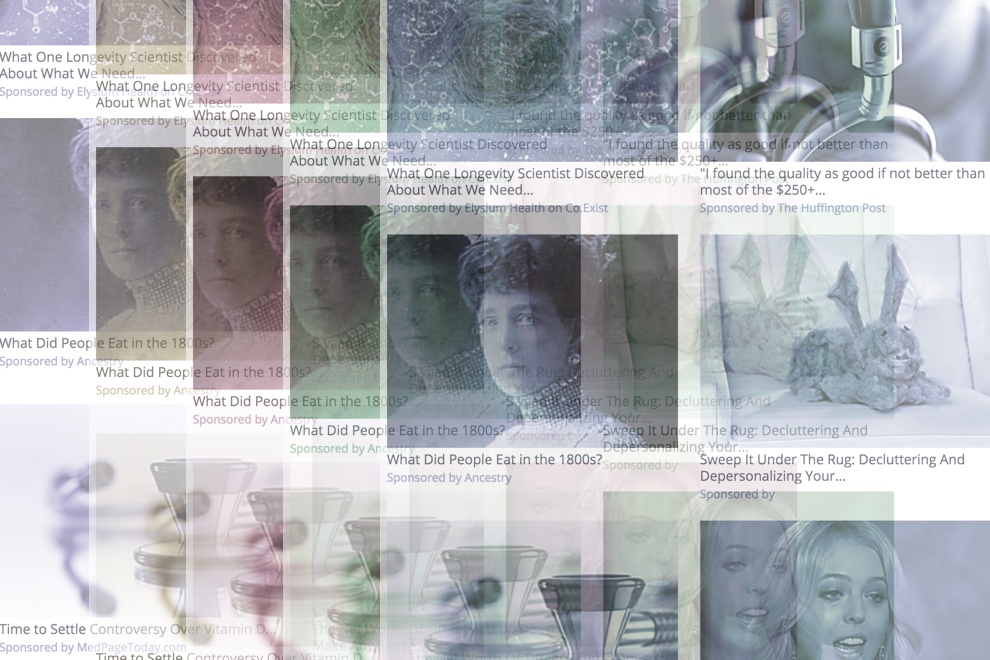
We thought about it… https://t.co/e7x4cnN01l
— Keith R. Hernandez (@keithrhernandez) October 31, 2016
A report released last month by the nonprofit ChangeAdvertising.org found that 82 percent of the top 50 news sites “were using ‘content ads’ from vendors including Taboola, Outbrain, Revcontent, and Adblade, amongst others.” We wrote up some of the findings then:
Clickbait links are often bait-and-switch. This might not be a surprise to anyone who has ever clicked a recommended content link, but recommended content headlines are often very different from those for the stories the link to. Clicking “Horrifying Woodstock Photos That Were Classified” sends you to a story titled “Rare Photos From Woodstock,” to use one example of 20 that ChangeAdvertising.org cites.
Recommended content widgets still have a disclosure problem. As with publishers, the recommended content companies can’t quite settle on the best way to disclose that their content is paid for. The preferred label, “Promoted Stories,” appeared on 16 percent of the links Change Advertising looked it. At 11 percent, “From the Web” came second, followed by “From Around The Web” (9 percent) and “Recommended for You” (7 percent). The most clear labels (“Paid content,” “Ad content,” etc.) were the least used.
General reaction on Twitter: Nobody (who actually pays attention to these things) is sad to see these modules go!
The death of Outbrain and Taboola can't come quickly enough https://t.co/EwWncLdZWQ pic.twitter.com/DCbOEJjgmu
— Casey Newton (@CaseyNewton) October 31, 2016
Finally. My opinion of a publisher plummets if I see this garbage recommended at the bottom of an article. https://t.co/4TK1GpNSYk
— Esther Kezia 📱🌟🍸 (@EstherKeziaH) October 31, 2016
Publishers finally decide money from Outbrain et al might not be the worth the self-loathing and loss of cred, maybe https://t.co/IpqB3vgLgo
— stacy-marie ishmael (@s_m_i) October 31, 2016
So far, though, Slate and The New Yorker are in the minority of publishers who are ditching these types of ads. The ads are used by The Washington Post, Business Insider, The Huffington Post, MSN, The Daily Beast, The Guardian, Bleacher Report, Vox.com, The Atlantic, and many others. (ChangeAdvertising.org’s report found varying numbers of the ads on the sites that use them. Salon.com topped out with 22 Outbrain ads; MSN had 21 Taboola ads.)
BuzzFeed, Yahoo, The New York Times, Mic, The Boston Globe, The Chicago Tribune, Upworthy, CNET, and Vice are among the publishers who do not use the ads. That list could grow a little longer if the Times story shames people into reconsidering, but that might be unlikely: “We have been told from major, major publishers that we have become their No. 1 revenue provider,” Matt Crenshaw, Outbrain’s VP of product marketing, said.
5 comments:
Pathetic publishers and editors who allow this dreck on their websites. Lack of basic ethics and taste. They push readers to digital and then populate chunks of the site with material they would never put in print. Shows the lie that digital is just as important and honored in modern newsrooms and board rooms. It isn’t and will never be because no one wants to admit digital for 95 percent of news sites is a financial black hole. Good only for “remainder” ad slots, unethical native advertising and schlock filler from bottom of the barrel content farms.
If we as readers stop clicking on the clickbait, there would be no revenue share, hence no incentive for publishers to keep these widgets around. Let’s do our part and not click on them!
Clue that the clickbait promoters are little better than street-corner hustlers, the phrase “major, major publishers,” which leaves the value a matter of alleged popularity rather than any proven benefit. So happy that The New Yorker is abandoning the cheesy practice.
Crenshaw is the Pied Piper of this crap. Hopefully other sites will join Slate and get rid of this clickbait. I would party hard if Outbrain went out of business.
Howdy! Do you know if they make any plugins to help with SEO?
I’m trying to get my website to rank for some targeted keywords but I’m not seeing very good success.
If you know of any please share. Many thanks!
I saw similar text here: Warm blankets
Trackbacks:
Leave a comment